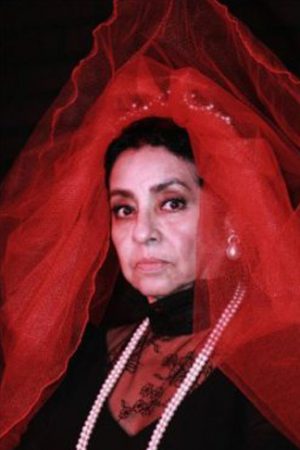Daisy Granados
Guest actress
He was born in Cienfuegos, Cuba, on December 9th 1942. He studied dramatic art at the National School of Art in Cubanacán. In 1964 he played his first leading role in film, in the film The decision. From that moment until today, he has worked as lead actress in more than 35 films, internationally catalogued as "The face of Cuban cinema". His performances in dramatic plays and musical comedies have been equally successful. He has represented Cuban cinematography in important international events and has participated as a juror in numerous festivals.
Filmography
The decision, direction: José Mass
When you grow up dear Adams, Direction: Egon Gunter (Germany).
Tulipa, direction: Manuel Octavio Gómez.
Memories of the underdevelopment, direction: Tomás Gutiérrez Alea.
The challenges, direction: Víctor Erice.
Of the American War, direction: Pastor Vega.
Pages of the diary of José Martí, direction: Josef Massip.
Portrait of Teresa, direction: Pastor Vega
are... or are...., direction: Julio García Espinosa.
Cecilia, direction: Humberto Solás.
Habanera, direction: Pastor Vega.
A successful man, direction: Humberto Solás.
Love in minefield, direction: Pastor Vega.
A very old gentleman with enormous wings, direction: Fernando Birry.
Plaff! Or too much fear of life, direction: Juan Carlos Tabío.
Tears to breakfast, direction: Walter Rojas (Venezuela).
The loneliness of the head of dispatch. Address: Rigoberto López.
Maria Antonia, Direction: Sergio Revolval
Parallel lives, direction: Pastor Vega.
The elephant and the bicycle, direction: Juan Carlos Tabío.
The curl, direction: Julius Sosa.
Things I left in Havana, direction: Manuel Gutiérrez Aragón.
Amanda's prophecies, direction: Pastor Vega.
A paradise under the stars. Director: Gerardo Chijona.
Nothing. Director: Juan Carlos Cremata.
Only once, address: Pastor Vega (Mexico).
In an unprecedented gesture, in 2017, the Academy of Motion Picture Arts and Sciences of the United States invited Daisy Granadosto form part of its permanent collection within the Visual History Program, in which influential members of the world film Community share their reflections on their life and career in filmed interviews.

